People like to poke fun at people in the city. They dress their dogs in matching outfits. And pups often make trips to doggie day spas. It’s a life of canine luxury – one that beats the hustle and bustle and stress we suffer through. We envy the dogs and their carefree existence. But even if we aren’t sending our dogs for puppy massages, we still invest a lot of our wages into keeping them comfortable. Our dogs mean the world to us, and we want nothing but the best for their lives. And while you may not flinch at investing in a top swimming pool for the yard, how much would you pay for your favorite hound? Once you discover the most expensive dog breeds, you may reevaluate your budget!
Canine Bank Accounts
Each year, people spend around $1,675 on their dogs. And since the ASPCA estimates that there are around 89.7 MILLION dogs in 63.4 million households across the country… Yeah, that’s an insane amount of money! And those pups come from every pedigree – including mixed parentage. We love our dogs, and we don’t bat an eye at doing whatever we can for them. Keeping them cozy in a snazzy winter coat when the snow’s falling? Not a problem. Checking in on how they’re doing while we’re away? We can make that work. And, of course, we take them everywhere with us, fitting them with travel beds, hiking boots, and harnesses so they stay safe and comfortable out in the wild. Honestly, it’s surprising the yearly average isn’t HIGHER!
So, where do the most expensive dog breeds fit into the equation? As you might expect, they’re all purebreds. Purebred dogs cost an average of FIVE TIMES more than a mixed breed (affectionately known as mutts) in the first place. And, unfortunately, purebred dogs often come with health concerns that lead to higher vet bills. It’s a financial quandary potential owners need to keep in mind – on top of their intentions to provide nothing but the best.
How Much is That Doggie in the Window?
When the ASPCA conducted their annual survey of pet owners, they found a surprising fact. People were asked where they got their dogs. The answer? An even split between breeders, friends (or relatives), and shelters. None of those came out on top. (In contrast, cats primarily came from shelters) Yet 3.3 MILLION dogs enter shelters every year, looking and hoping for a home.
Dog breed popularity varies from year to year. Kind of like fashion (horrible as that sounds), dogs rise and fall through promotion on Instagram or other social media platforms. And breeders attempt to follow suit. But if there’s less “supply” available, prices go up. On the opposite side, if many breeders join in on the trend, plenty of puppies become available, and the cost goes down. So there’s some fluctuation in the most expensive dog breeds, at least towards the list’s low range. At the HIGH end, you find rare breeds people may not have heard of.
On the downside, every time something has the chance to generate a lot of money (and these are SIGNIFICANT prices – higher than you see for the most expensive cat breeds), people rush to take advantage of the situation. So if you’re considering purchasing a new dog, watch out for puppy mill scams. Do your homework CAREFULLY. And consider researching a rescue for the breed. Odds are you’ll find a hopeful pup desperate for a home. (Not to mention you’ll save yourself some serious pennies!)
The Most Expensive Dog Breeds
While often on the rare side, the most expensive dog breeds are still canines. You don’t need to rush to add an extension to your home, so they have their own room. Don’t set up an order for imported bottled water, either. Yes, you need to understand the needs of your particular breed. The breeder’s going to question you and make sure you’re not jumping on a trend. And, odds are, they’ll make sure you’re getting pet insurance set up. Because you WILL need it in every case. Health issues abound when you get into these breeds. But they’re still dogs. They want love, attention, and exercise. If you’ve got that, they’ll return the joy and unshakable canine bond.
The Most Expensive Dog Breeds: $6,000-$7,000
Did you ever imagine you’d spend $6,000 on a puppy? Crazy, right? But if you have your heart set on one of these adorable pups, you can expect to spend at LEAST that much. Whether you’re charmed by their antics or beauty, these champions start the list of the most expensive breeds at the high end of the pay scale. And when you factor in some of their care needs…yeah, make sure you have a special savings account ready to go.

French Bulldog 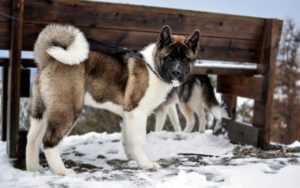
Akita 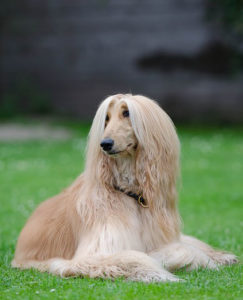
Afghan Hound
- French Bulldog: In the 1800s, breeders combined the English Bulldog with different breeds of Parisian ratters. The result? Everyone’s favorite Frenchie! These darlings of social media top the popularity charts in the small dog world. However, they have extremely narrow hips. Breeding often results in litters of no more than two (three if you’re lucky). And the mothers usually need to undergo C-sections. This means the price tag goes up.
- Akita: When it comes to Akitas, you have two varieties to choose from: American and Japanese. Both trace their heritage to northern Japan’s mountainous regions, but they bring different color palettes to the party. American Akitas reflect every dog hair coat; Japanese Akitas stick to brown, black, and fawn with darker or lighter overlays. The breed’s approached extinction several times, making them a rarer dog. They require an experienced owner, too, driving up their price tag.
- Afghan Hound: With their beautiful, flowing hair, is there any doubt Afghans belong on the most expensive dog breed list? They come from the mountains of Afghanistan, and that silky hair requires DAILY brushing to avoid tangles and mats. True Afghans have solid black faces; any white markings are discouraged for breed standards. Unfortunately, they’re predisposed to hypothyroidism, so make sure you’re prepared for regular visits to the vet for lab work and medication adjustments.
The Most Expensive Dog Breeds: $7,500-$8,750
As we climb the price brackets on the most expensive dog breed list, we start seeing rarer breeds make an appearance. When the numbers of a dog decrease, the price naturally increases as a result. There simply aren’t enough pups to meet the demand. You may not have even HEARD of some of these canines. It takes a genuine fancier to track them down. Homework’s key here. You’ll want to make sure your vet understands the breed just as much as you do.
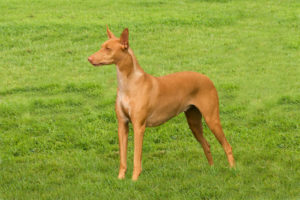
Pharaoh Hound 
Dogo Argentino 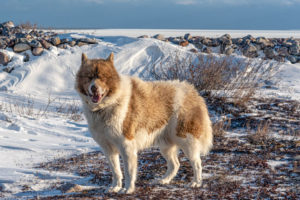
Canadian Eskimo Dog
- Pharaoh Hound: With a regal Egyptian quality, Pharaoh Hounds earn their name. Native to the Maltese Islands, their called Kelb-tal-Fenek in Maltese, which means “rabbit dog.” (Maybe a little less regal) In Malta, they’re hunting dogs, specializing in rabbits. Pharaohs are extremely loyal and intelligent, making them ideal for families. Unfortunately, they’re also prone to stress. If you’re not prepared to handle their every need, you could find yourself shelling out thousands of dollars to treat digestive and neurotic conditions.
- Dogo Argentino: In 1928, Dogos appeared, the result of combining the Cordoba Fighting Dog (now extinct) and Great Danes. Their muscular frames and dominant personalities made them perfect for hunting wild hogs throughout South America and Asia. You need to have a MORE dominant personality to handle their training. And their reputation for aggression precedes them. It’s illegal to own a Dogo in the United Kingdom, Colorado, and New York City. When you’re banned in entire COUNTRIES, your cost goes up, earning you a spot as one of the most expensive dog breeds.
- Canadian Eskimo Dog: In 2018, only 300 Canadian Eskimo Dogs remained in existence, making them one of the rarest dog breeds in the world. Over 1,000 years ago, they crossed to North America from Siberia with the Thule people. Unfortunately, they suffered heavy losses between 1950-1970, courtesy of the snowmobile’s invention (technology ISN’T always a good thing!). The breed hasn’t recovered, and now they’re dwindling. They’re highly territorial dogs, reacting to every small noise. Do NOT introduce them into family homes! And if you live in a warmer region? BAD idea.
The Most Expensive Dog Breeds: $9,000-$10,000
A FIVE-DIGIT price tag? It’s hard to believe, but we’re not even at the TOP of the most expensive dog breeds! This group contains a couple of rare specimens and a dog with the honor of the most expensive pup ever sold. (If you thought these prices were high, brace yourself) Once again, when you start getting to breeds people aren’t familiar with, finding puppies gets difficult. You’ll have to do some research. And expect a thorough grilling from the breeder. They’ll want to make sure you understand what you’re getting yourself in for!
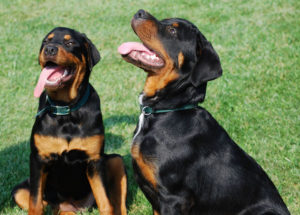
Rottweiler 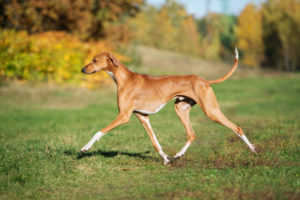
Azawakh 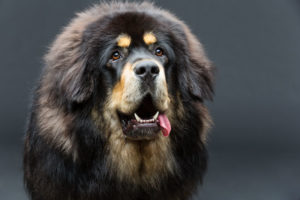
Tibetan Mastiff
- Rottweiler: Surprised? After all, people love Rotties! So how can they show up on the most expensive dog breed list? Well, there’s a slight catch. On average, you’ll spend $1,500 on a Rottie puppy (not terrible, compared to the other dogs on this list). HOWEVER, Rotties pile up the expenses in their vet bills. They have the dubious honor of charging the highest pet insurance claims of any other breed. Rotties are susceptible to almost every condition dogs can get, especially when it comes to the skeleton. So that $9,000 represents the total anticipated cost of a dog over their lifetime.
- Azawakh: The AKC only recognized the Azawakh in 2019, making it a relatively new breed for dog lovers. In West Africa, they serve as hunting dogs. They share a lineage with sighthounds throughout the Middle East and South India (which is why you’ll see the distinct narrow profile to their heads). You need to meet their demanding exercise needs – with a hitch. These dogs ONLY run around in YOUR presence. It’s a nice loyalty, but it means you can’t simply turn them loose in the backyard and walk away.
- Tibetan Mastiff: You need plenty of room to bring a Tibetan Mastiff home! These dogs top 150 pounds! They’re also one of the oldest dog breeds globally and likely the origin of all mastiffs. All of that fluff and bulk served as guards, but their care needs? The expense proved too much, so the dogs dwindled in popularity. (Imagine your food cost!) They’re lovable, loyal fluff balls if you can manage their bills. And, hopefully, you won’t spend $1.95 MILLION for one. In 2014, a Tibetan Mastiff (supposedly with lion blood in its ancestry) sold for that much!
The Most Expensive Dog Breeds: $11,000-$14,000
Have that charge card ready? You’ve reached the top of the list for the most expensive dog breeds! These pups tip the financial scales regarding initial costs, care and management, health needs, and training. It’s a lot to ask of a person. But when you’re talking love, can you really put a price on that? (Well, obviously you CAN, but you see where I’m going) Before you max out your credit limit, think carefully. You’re taking on A LOT of responsibility with one of these pups. Make sure you’re ready for everything to come.

Chow Chow 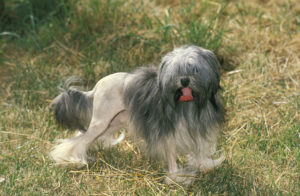
Löwchen 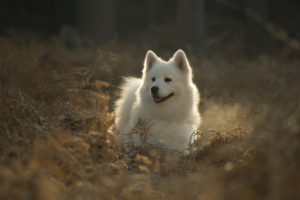
Samoyed
- Chow Chow: Chow Chows have the distinction as one of the oldest and rarest dog breeds in the world. And when you carry that honor, you get a spot on the most expensive dog breed list. Unfortunately, their rarity has also led to many health problems that mean significant vet bills throughout their lives. And all of that soft hair? You need to stay on top of regular grooming. Not to mention a reputable trainer to prevent stand-offs. Their one of the most stubborn breeds you’ll encounter.
- Löwchen: While the name Löwchen means “little lion dog,” this breed actually originated in France (no lions in France in EONS). They thrived throughout Europe for 500 years. But in 1973, there were only 63 left in the world! Fanciers of the breed have slowly revived the population, but it’s only climbed to about 300. With so few Löwchen available, you’ll scramble to find one. They’re playful and active but extremely needy pups. You’ll face separation anxiety problems if you attempt to leave them alone.
- Samoyed: Everyone loves a Sammy smile! Originating as a herding dog from Siberia, Sammies have the honor as the most expensive dog breed. Why? Oddly enough, they’re not common. They have an independent streak, and they WILL roam and explore if you don’t keep them on a leash. An insistent need for attention makes them ideal for kids. However, they get ALL of the expensive health conditions, including cardiac issues. Make sure you’re prepared for vet concerns of up to $5,000.
I’ll Take the Gold Leaf Milkbone
Maybe you have a mixed breed at home. Perhaps you investigated a rescue for your beloved purebred. (Not gonna lie – that’s the route we took) Or you gritted your teeth and invested in one of the most expensive dog breeds. If your pup is in a loving home and happy, there’s no wrong answer.
How much we spend for our dogs matters less than how much we adore and care for them.
THAT love, you can’t put a price on!






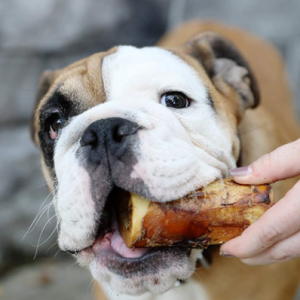
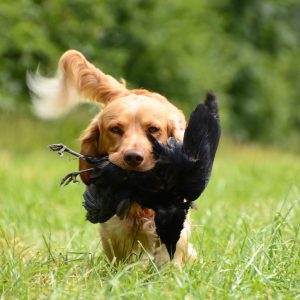


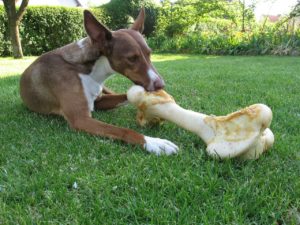


No comment yet, add your voice below!